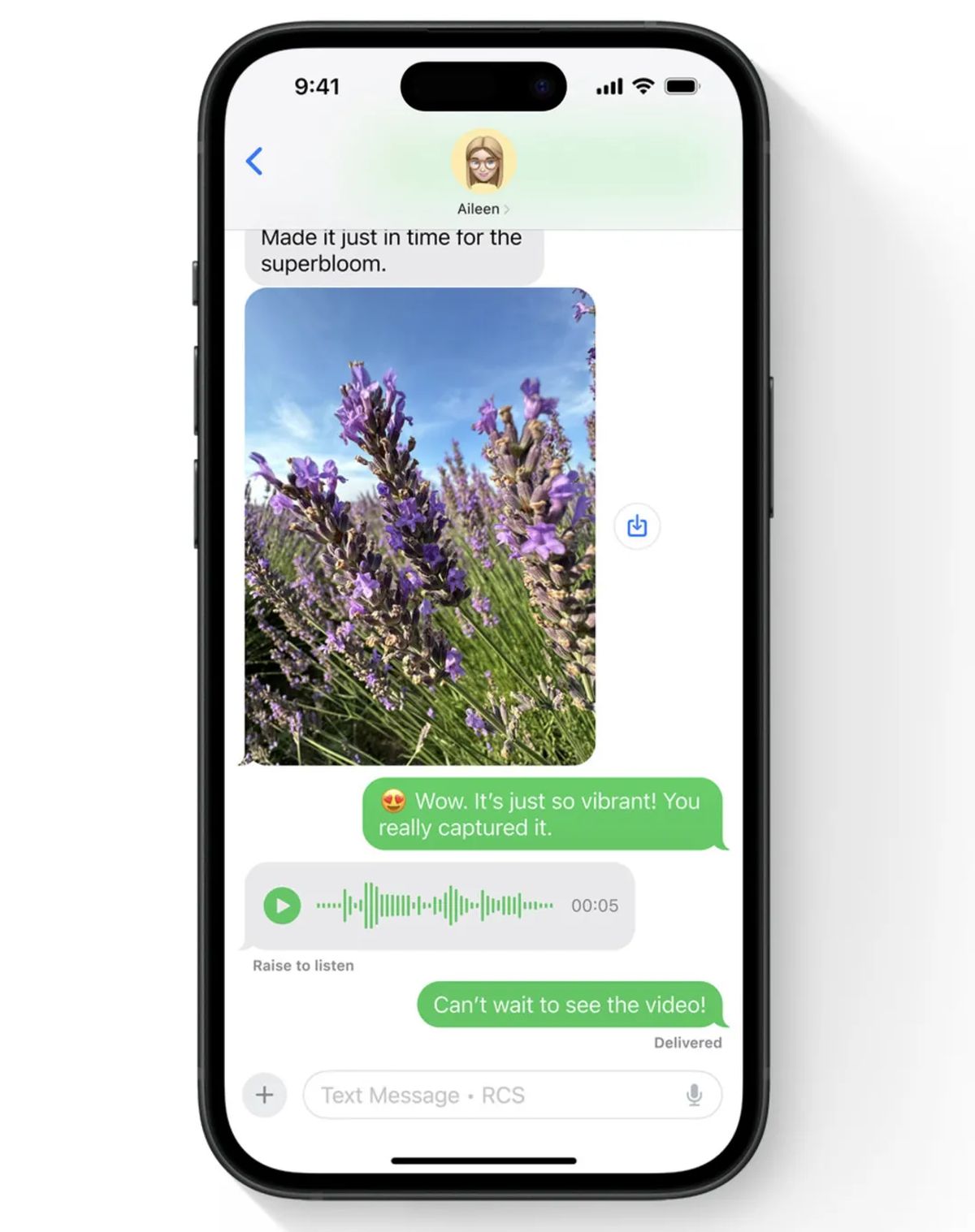With the introduction of iOS 18 RCS support, Apple is set to revolutionize cross-platform messaging. This new feature will replace SMS as the standard communication protocol between Android and iOS devices, bringing enhanced capabilities and improved functionality. The decision comes after years of anticipation, persuasion, and regulatory pressure from the EU.
Unfortunately, details are scarce beyond the fact that iOS 18 RCS support is coming. Apple’s website for the upcoming release does provide a glimpse of how RCS will appear on iPhones. The term “RCS” will be displayed in the text field to signify a connection, but otherwise, it looks fairly standard.
Currently, when iOS and Android users message each other, the service defaults to SMS — resulting in lower quality for photos and videos, shortened messages, and notably, the lack of end-to-end encryption that iMessage offers. Messages from Android phones appear as green bubbles in iMessage chats, leading to confusion and disruption.

RCS, or Rich Communication Services, was designed to succeed SMS. It includes features such as typing indicators, read receipts, longer messages, and better-quality images and videos, making it quite similar to iMessage. Over the past five years, RCS has become the standard messaging protocol on Android devices, as US wireless carriers have fully implemented it. However, Apple has resisted supporting it. Starting with iOS 18, some of these iMessage-like functionalities will be available for cross-platform conversations.
How iOS 18 RCS support enhances communication between iPhone and Android users
The introduction of iOS 18 RCS support significantly improves the communication experience between iPhone and Android users in several ways:
- Higher quality media: RCS allows for the sending of higher-quality images and videos, addressing one of the major drawbacks of SMS, which compresses media files. This ensures that shared photos and videos retain their original quality across both platforms.
- Enhanced messaging features: With RCS, users gain access to features such as typing indicators and read receipts, which were previously exclusive to iMessage. This brings a richer, more interactive messaging experience to cross-platform conversations.
- Longer messages: RCS supports longer text messages compared to the limitations of SMS, allowing users to send detailed messages without splitting them into multiple parts.
- End-to-end encryption: Although not universally implemented yet, RCS has the potential for end-to-end encryption, which would enhance the privacy and security of messages sent between iPhone and Android users, similar to iMessage.
- Seamless integration: The new RCS standard is integrated directly into the Messages app on iOS 18, making it easy for users to communicate without needing third-party apps. This seamless integration enhances user convenience and ensures a smooth messaging experience.
- Uniform messaging experience: By adopting RCS, Apple aligns more closely with the standard messaging protocol used by Android devices, reducing the disparity in messaging features and creating a more uniform experience for all users, regardless of their device.
Overall, iOS 18 RCS support bridges the gap between iPhone and Android users, offering a more consistent, feature-rich, and secure messaging platform that enhances overall communication.
It is unlikely that pressure from Google and Samsung to adopt RCS was the main reason for Apple’s change of heart. In November, Apple unexpectedly announced that iOS 18 would include RCS support in the following year. This timing was probably strategic; Apple likely made this decision to address concerns from EU regulators.
11 new iOS 18 features you can’t miss
Things are moving swiftly on the Apple front. Besides the introduction of iOS 18 RCS support, the Cupertino firm unleashed Apple Intelligence that promises to enhance user experience with AI-driven features. Additionally, Elon Musk has already voiced his opposition to ChatGPT-iPhone integration, adding another layer of intrigue to Apple’s evolving landscape. Meanwhile, the unveiling of Apple VisionOS 2 shows significant advancements in their VR technology. As these developments unfold, it’s clear that Apple is pushing the boundaries of innovation and technology, making this an exciting time for tech enthusiasts and professionals alike.
Featured image credit: Apple





